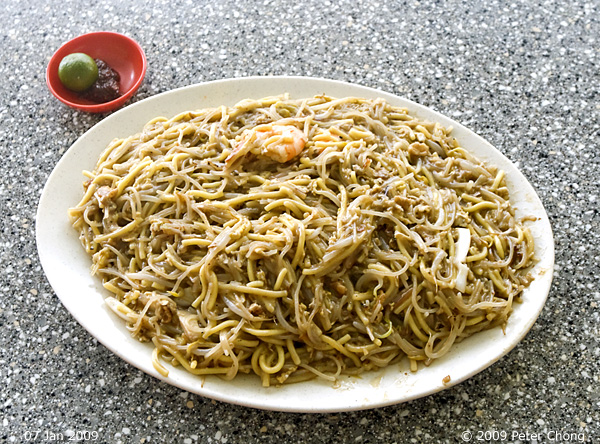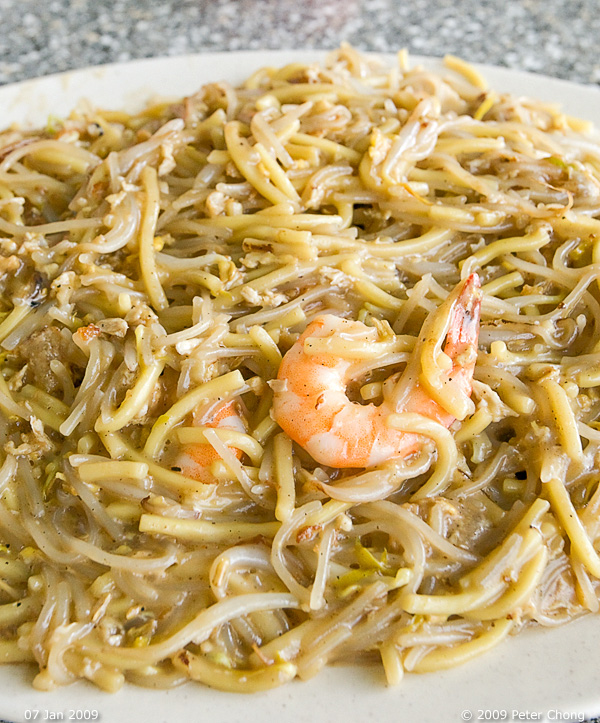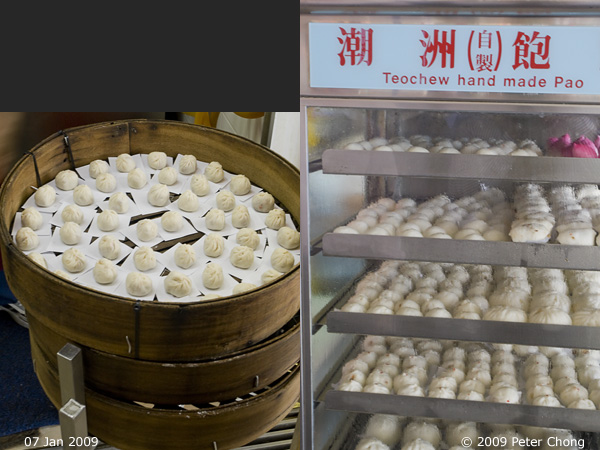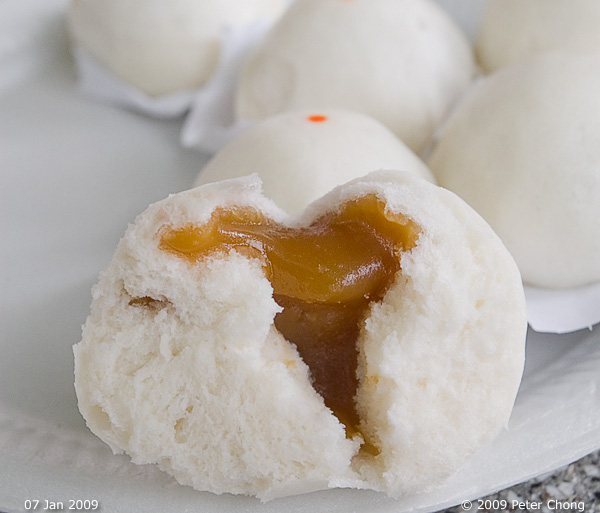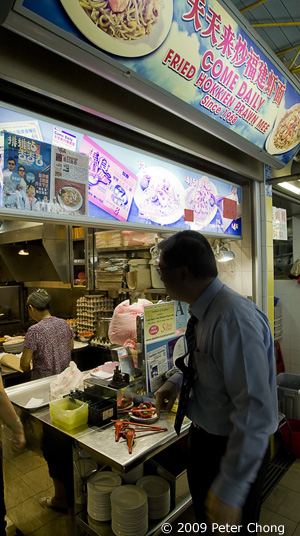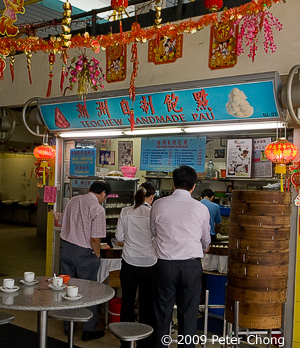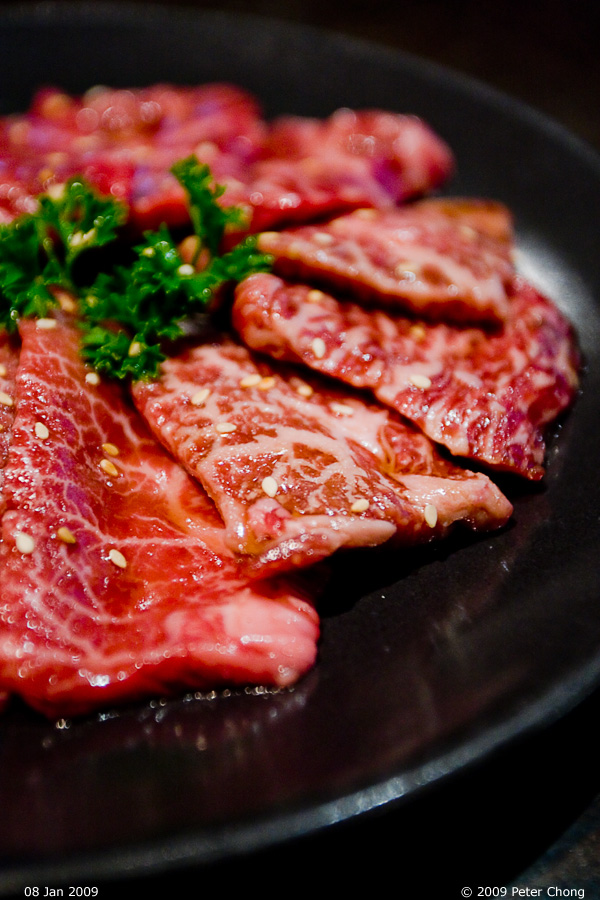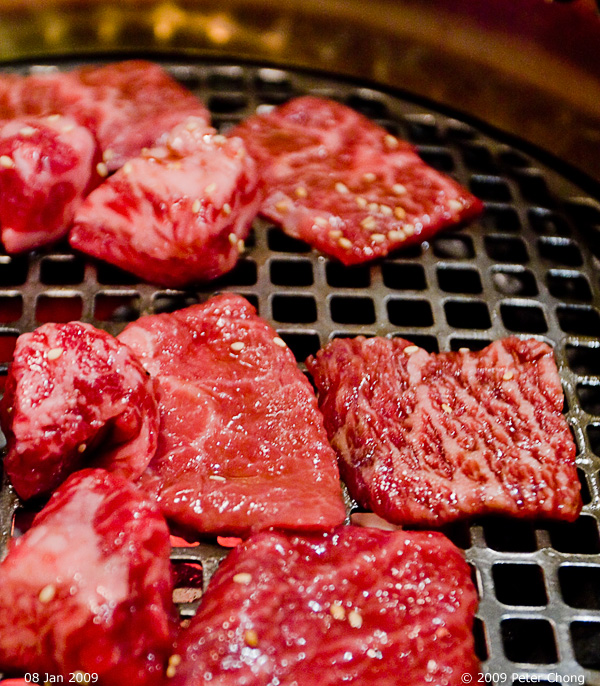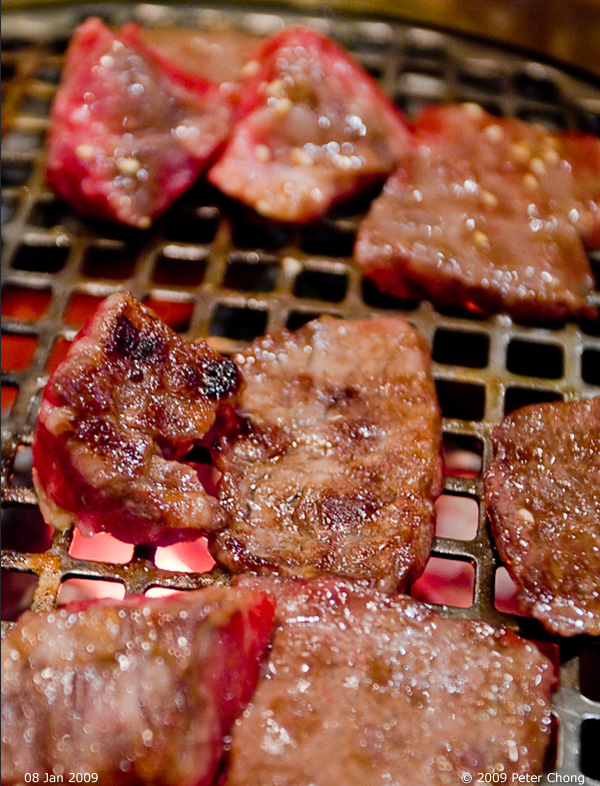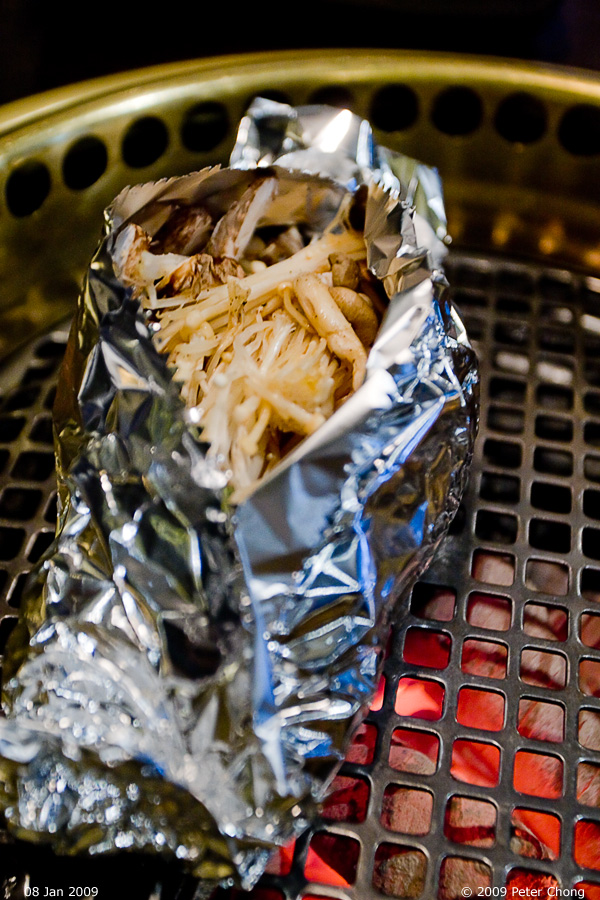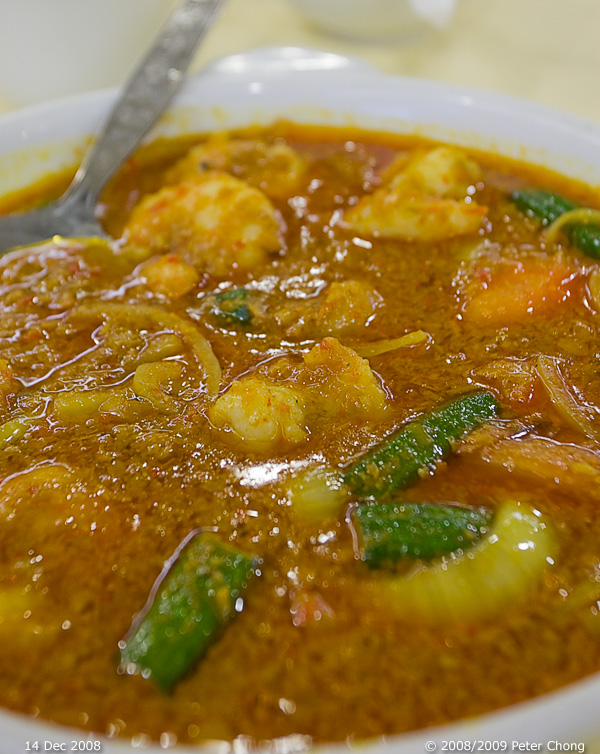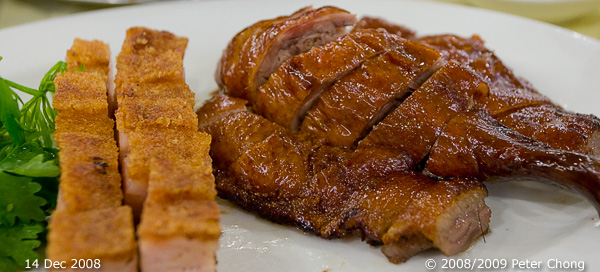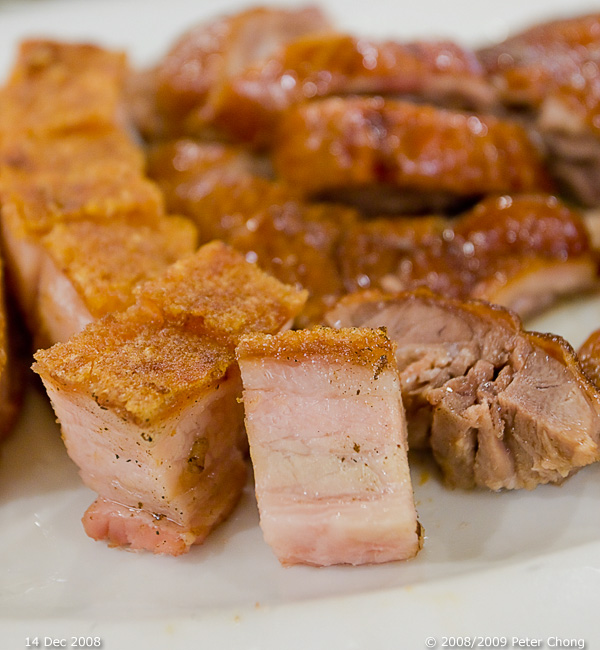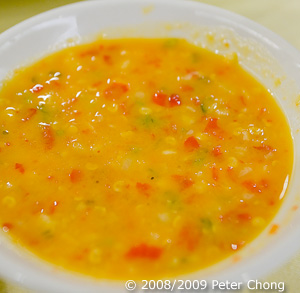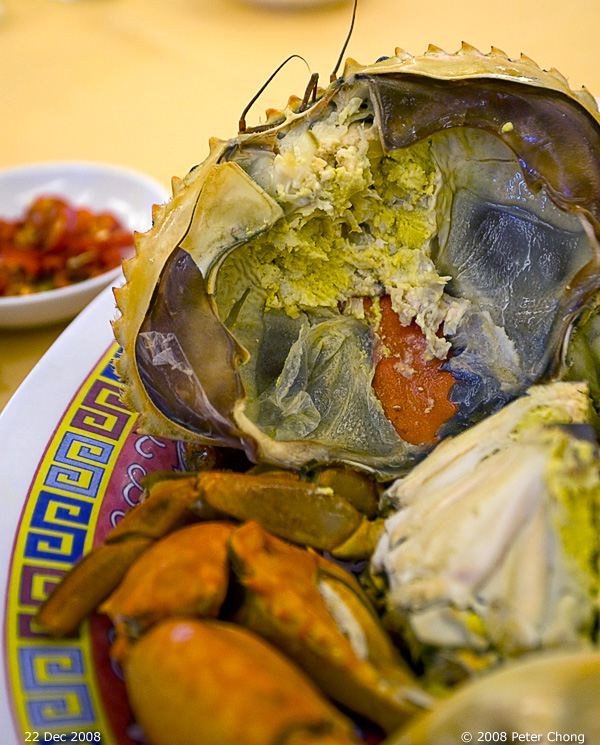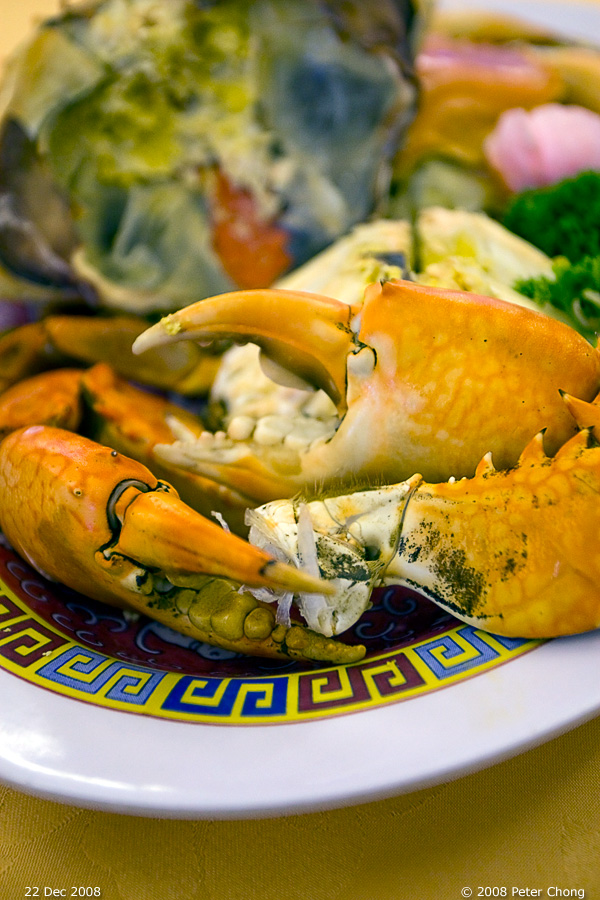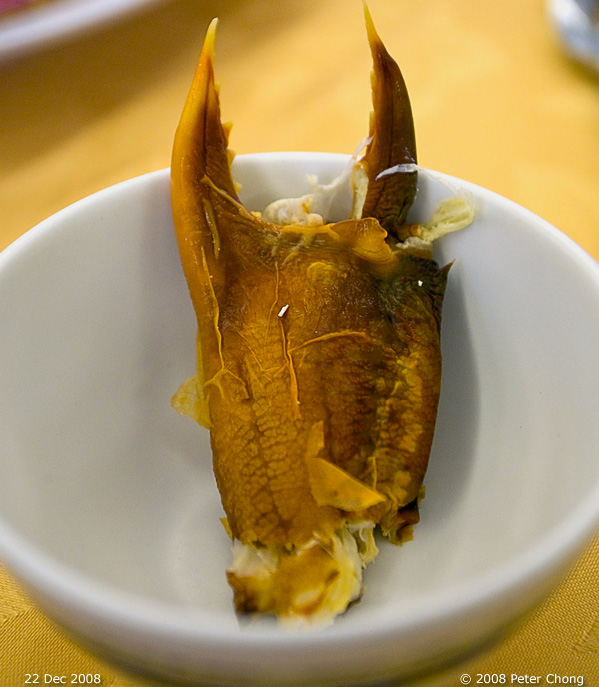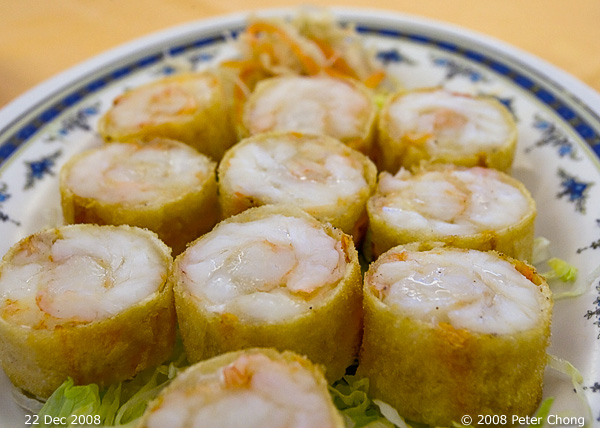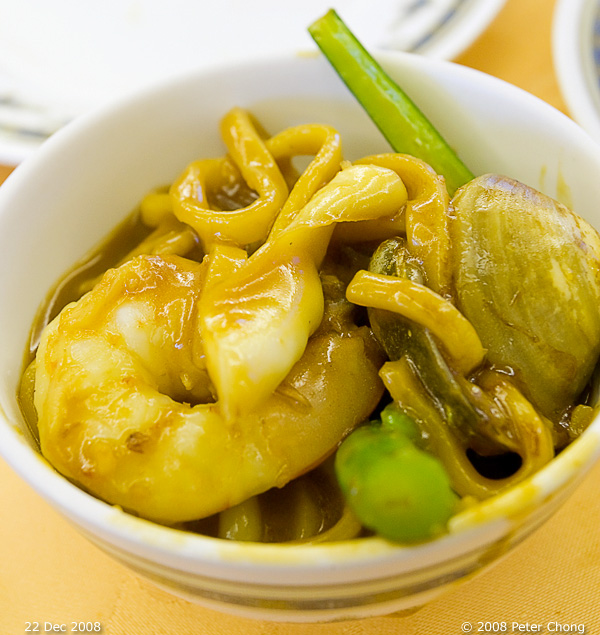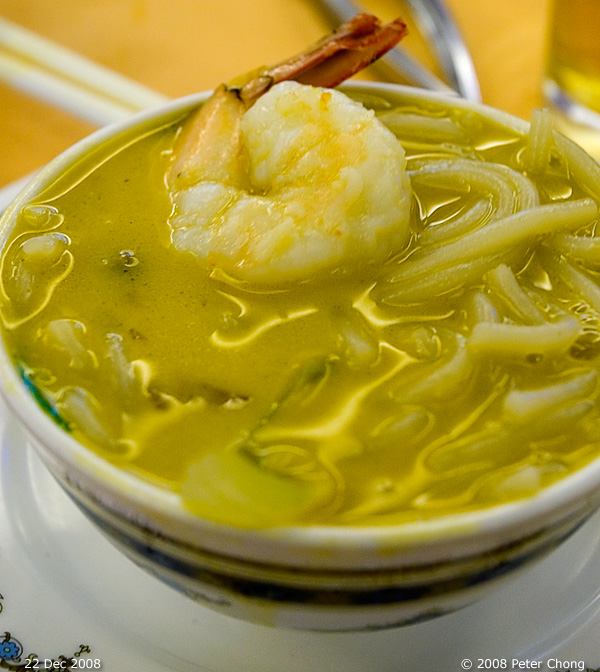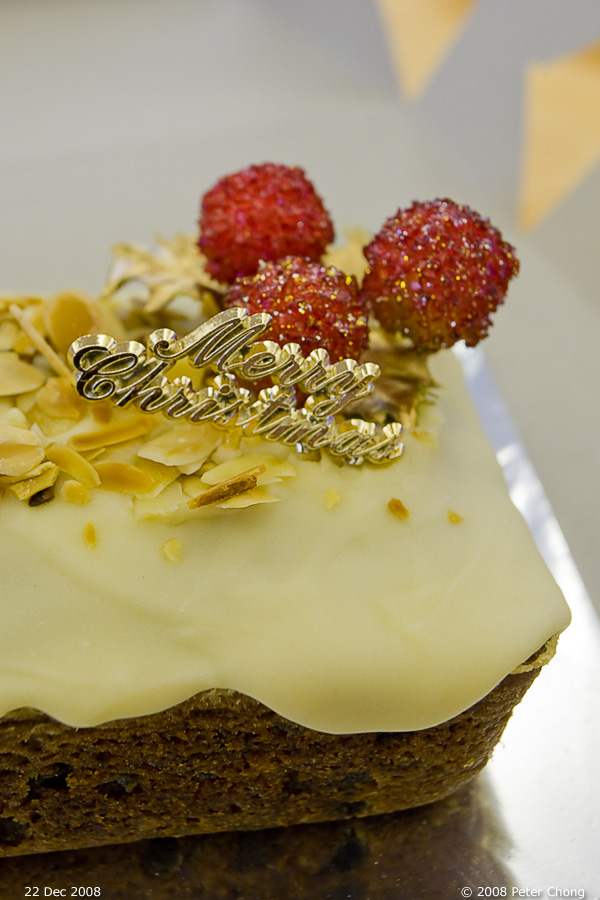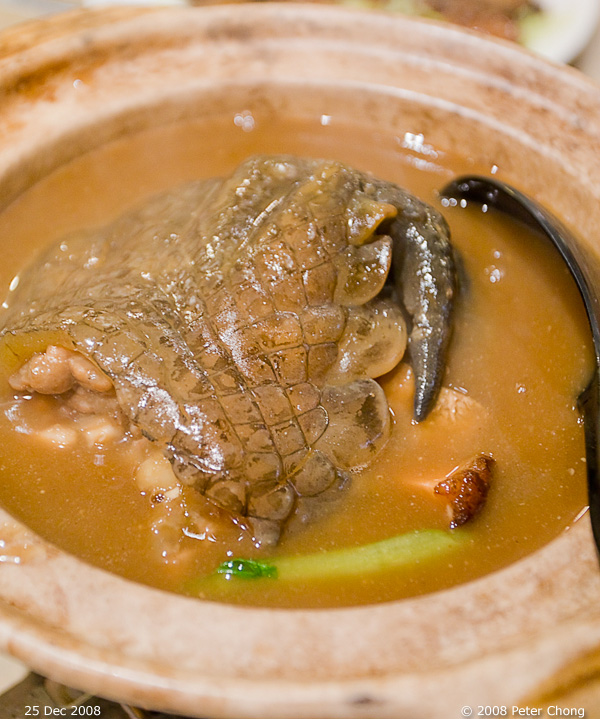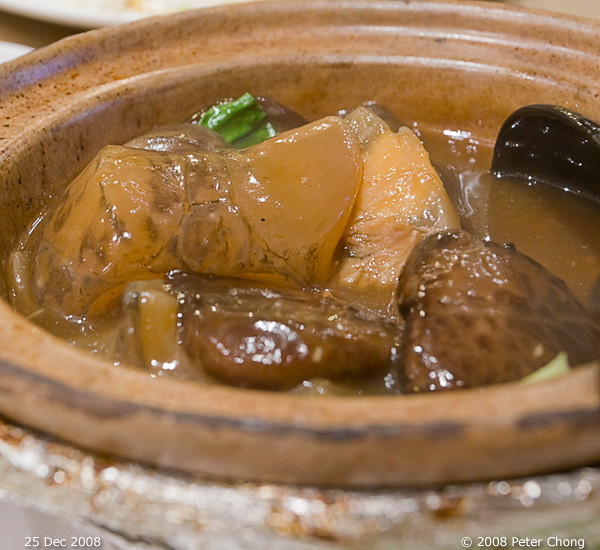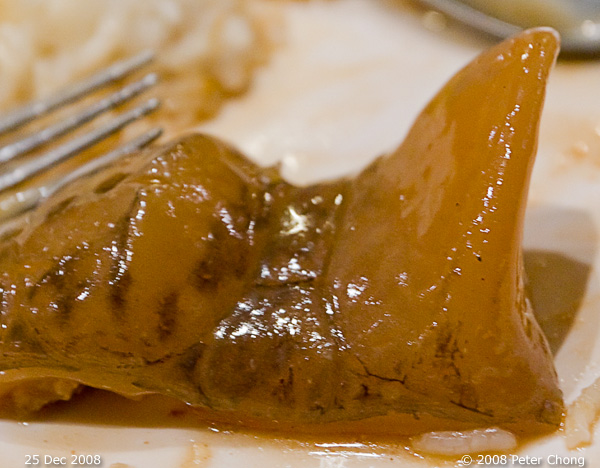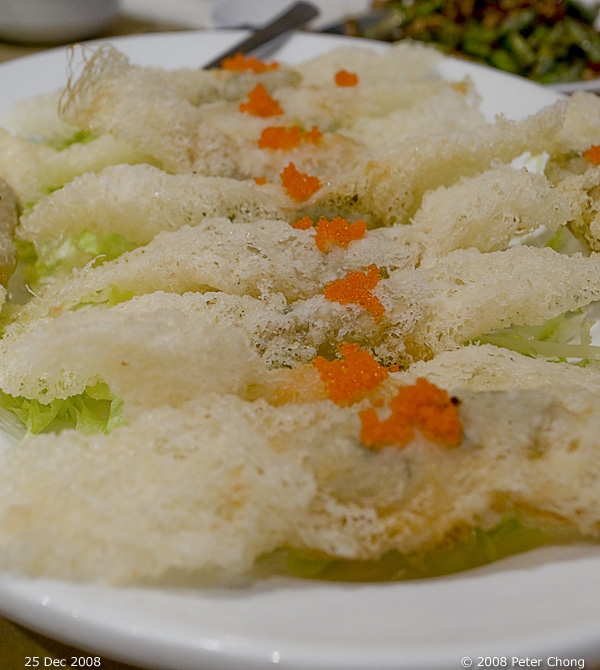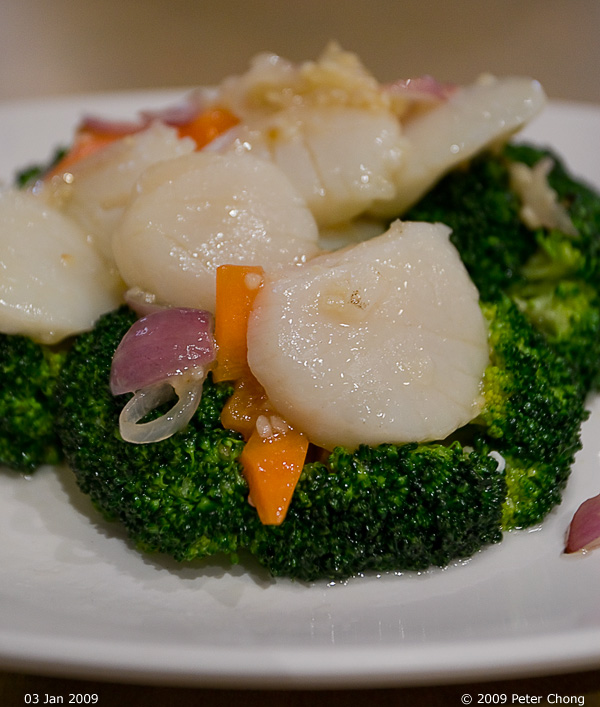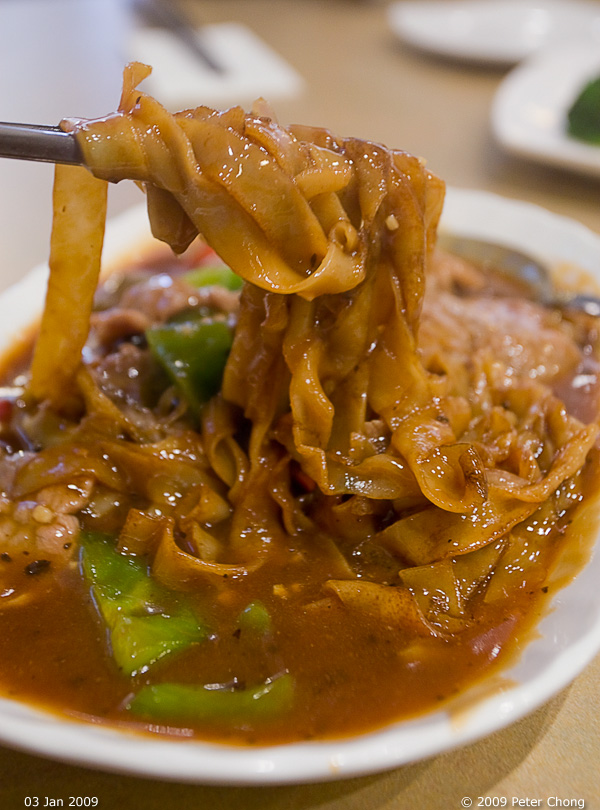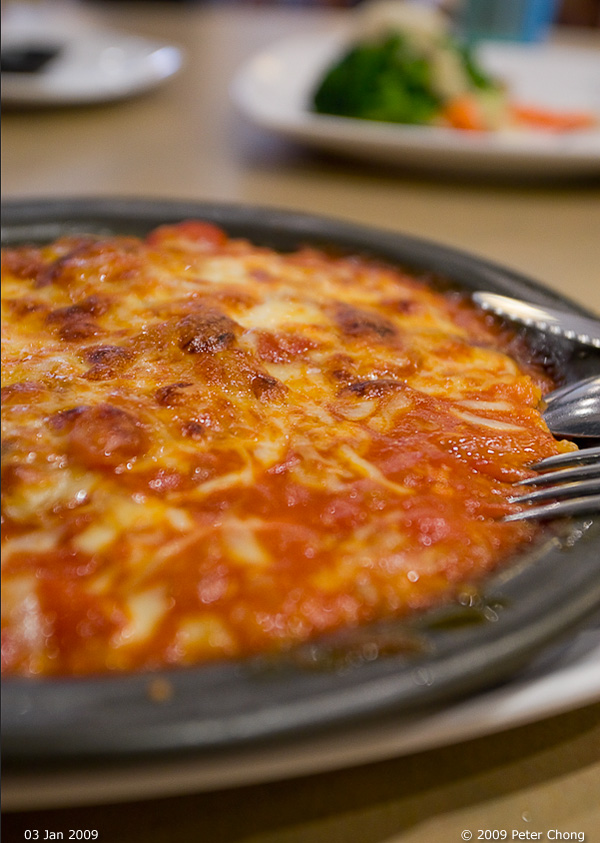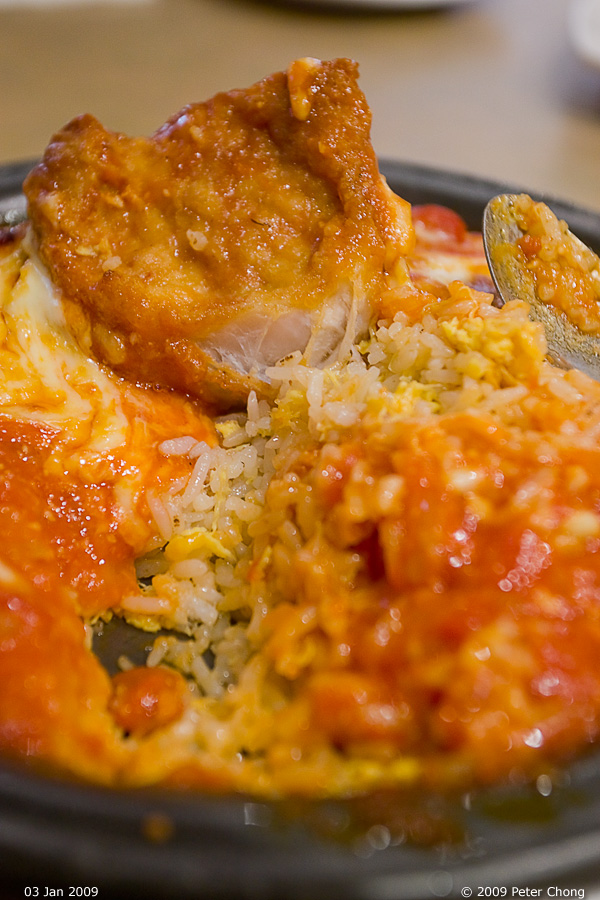Another interesting joint introduced by Larry, this time acting as the perfect Teochew Ah Hiah, and recommended a Teochew restaurant.
Tai Seng, hidden in a corner of People's Park Centre, this restaurant is a gem of Teochew cuisine. Run by 3 brothers, we met with the eldest sibling - Johnny. Johnny is a veritable encyclopedia of all things Teochew foodie...he was able to wax lyrical of the ingredients of the dishes he served that afternoon.
We started with a superb hae cho.
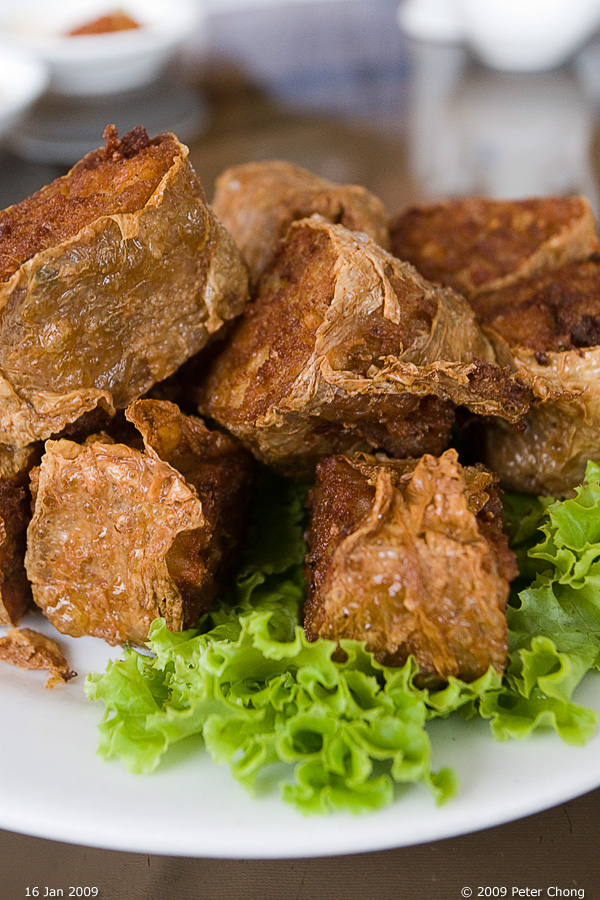
The dish was very fragrant...whifts of prawns and pork in the very crispy bean curd skin made my mouth water. The pieces were somewhat larger than the regular hae cho at the usual cze char stall. These huge balls were the size of golf balls.
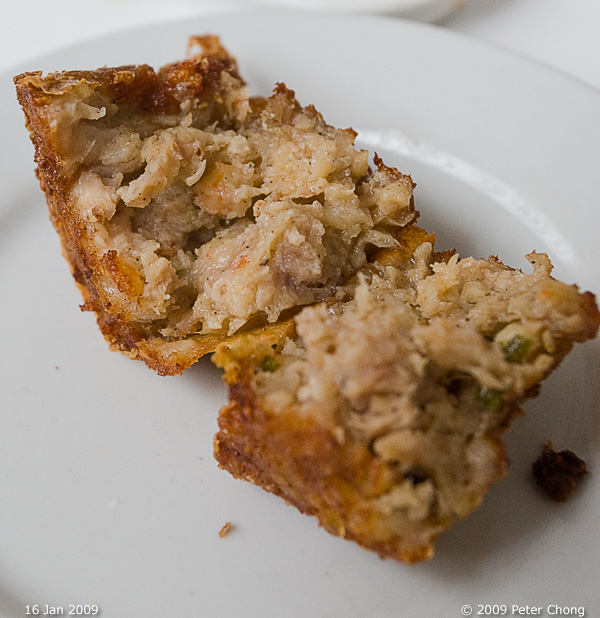
Cutting one open, reveals even more intense fragrance. The insides were made from a mixture of minced pork and prawns. Wrapped in bean curd skin, the balls were deep fried in very hot fat, rendering the bean curd skin very crispy, and the insides very juicy and tasty.
As I mentioned before, the hae cho standard in Singapore is very high...many establishments serve excellent samples. Tai Seng's was a bit special...hints of crab were detected, and the prawns and pork mix were very tasty.
One does not eat Teochew without eating Braised Goose.

Tai Seng's braised goose was excellent. Carefully braised, the meat was soft, tender, and still retains the juices. The skin provided some umami support with a thin layer of fat, but not too much. The entire ensemble was meant to be eaten with a Teochew style chilli...called sng-nee, it is a concoction comprising of garlic, vinegar and chilli.
Soo Chye, a typical Teochew dish was up next:

Johnny was particularly proud of this Soo Chye. He told us that in versions of this, up to seven ingredients are steamed together, including button and Chinese mushrooms, seaweed or fatt choy, kai lan or kar nar in teochew, mustard greens and pek chye or wongbok. The version we had today had some 5 vegetables. And being close to Chinese New Year, the fatt choy was particularly relevant...in the hopes of raising the prosperity index in what some have forecasted as a tough ox year.
But one taste, and one's spirits are lifted. Perhaps its the mild, tasty sauce that provides this solace. But also the different vegetables are expertly blended into one cohesive whole...each complementing the other. I enjoyed this dish very much.
Then, all broke loose with the Teochew Char Kway Teow with kar nar (kai lan)
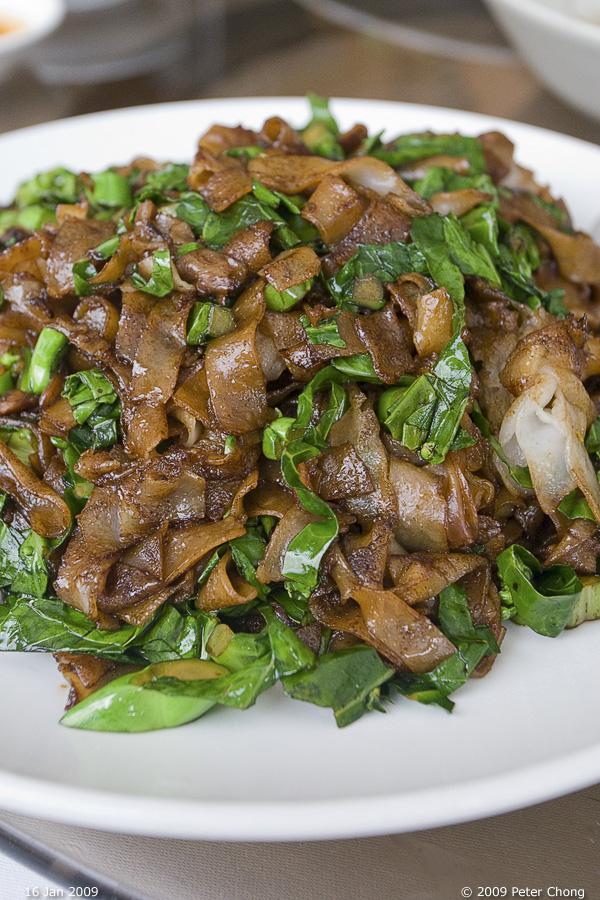
Kin and I often reminisce about the superb Teochew CKT served by the now defunct Swatow Garden restaurant at the Golden Shoe Carpark at Market Street. Since the restaurant closed, nowhere could we find a similarly tasty CKT. Fried dry, with kai lan (the Teochews and Hokkiens call kar nar), and using a semi-transparent kway teow...I don't know if it is the case, but I imagine the kway teow to be dry rice sticks like those used in Thai Kway Teow. The dry sticks are soaked in some warm water just before frying, rehydrating in the process, and gaining a springy texture, and a translucent appearance. This kway teow is not as greasy as the wet type used in the hawker CKT, but had a tougher texture.
The kar nar was not bitter, but provided crunchy accompaniment to the CKT. Excellent2.
Larry also recommended a special siew mai...
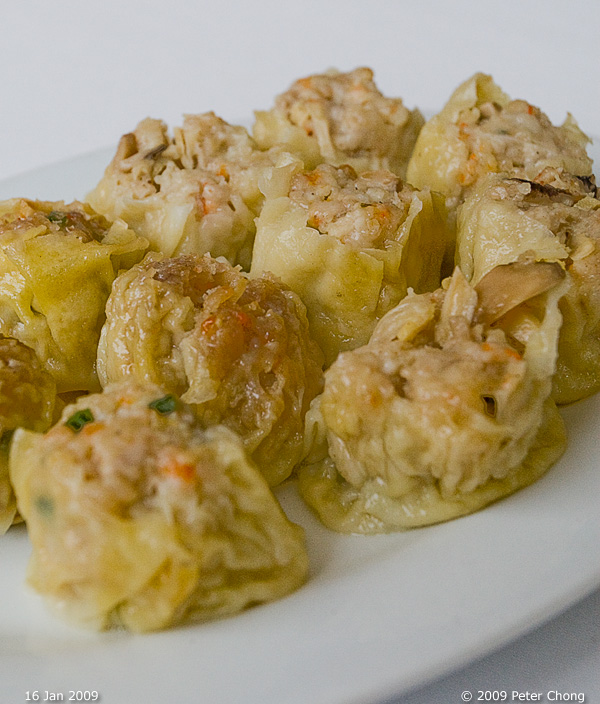
Made in the premises (in horology speak...inhouse!!) the pork is wrapped by hand in a skin made of rice flour, instead of the more typical Cantonese version which uses wheat flour skin. The skin was softer, and had no flavours of its own. I did not find this better than the Cantonese version, but Larry and SJX loved this dish.
Finally, a piéce de resistance...ohr nee
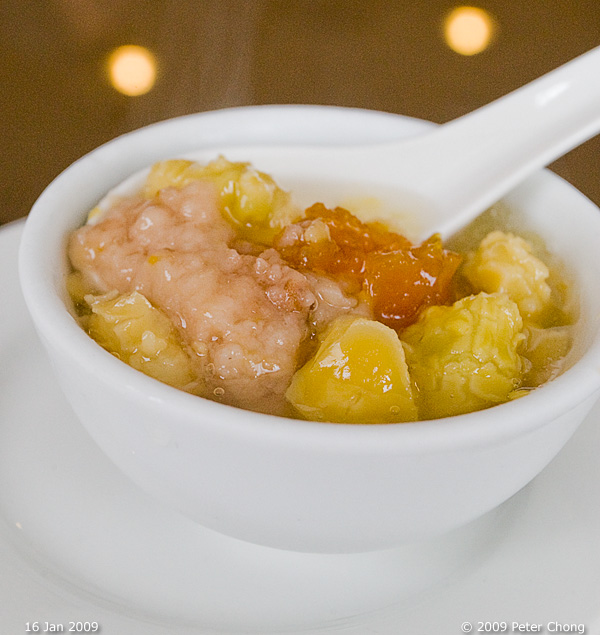
They were generous with the ingredients - yam, finely ground, and still very fragrant and light...pumpkin, ginko nuts...stirred incessantly whilst being steamed with pork lard. This was smooth...indicating the lard was generous...the lard also provided for superior taste, and provided the anchor for the yam to break free from being absorbent and dry to being smooth and creamy. The pumpkin fortified the creamy mouth feel, and the ginko nuts provided some crunch. Very good ohr nee.
Great Teochew restaurants in Singapore are not many. Hang Kang used to be excellent, but for me, it lost something along the way when they moved a few doors to their own building some years back. Swatow is sadly no more. Huat Kee in Amoy has gone upmarket, and even offers wine pairings. I find the food good, but not excellent. Tai Seng, on the other hand offers a taste of tradition. And keeps on the traditional taste. Larry suggests that the lobster noodles is another killer dish...to be tried for another lunch. We didn't order the classical Teochew steam fish as we had wanted space in the stomachs to taste the interesting dishes Larry suggested...I am sure the steamed fish would be good.

101 Upper Cross Street
#03-32 People's Park Centre
Tel: 6220 3830
